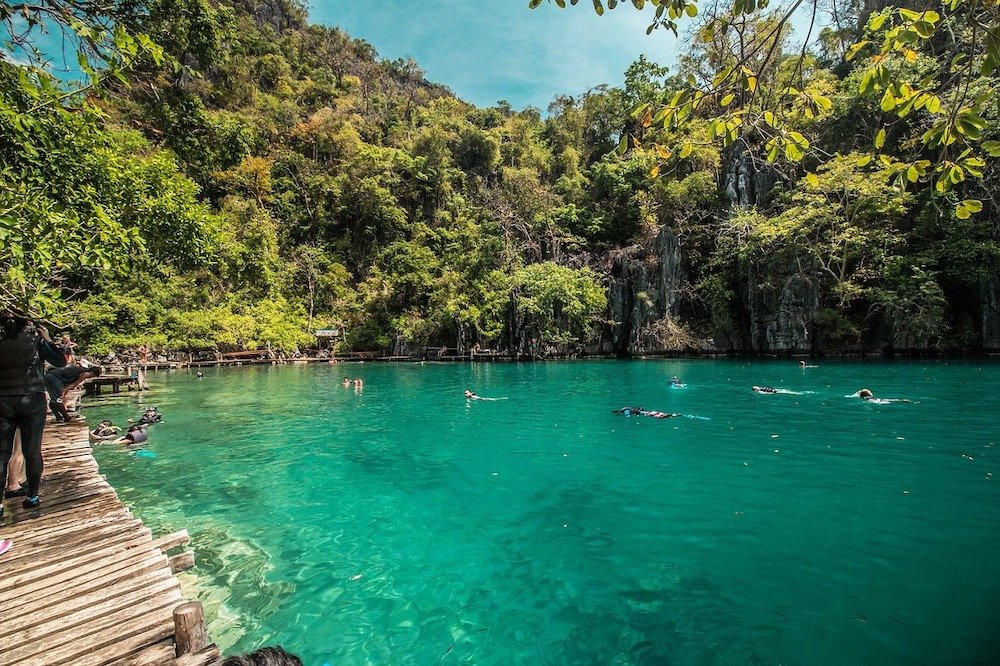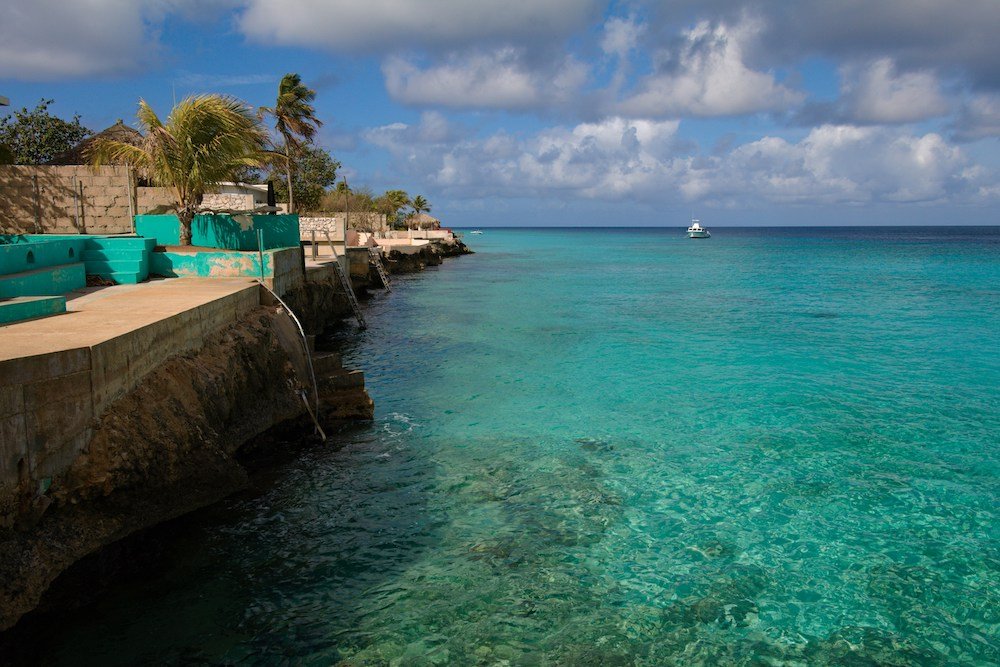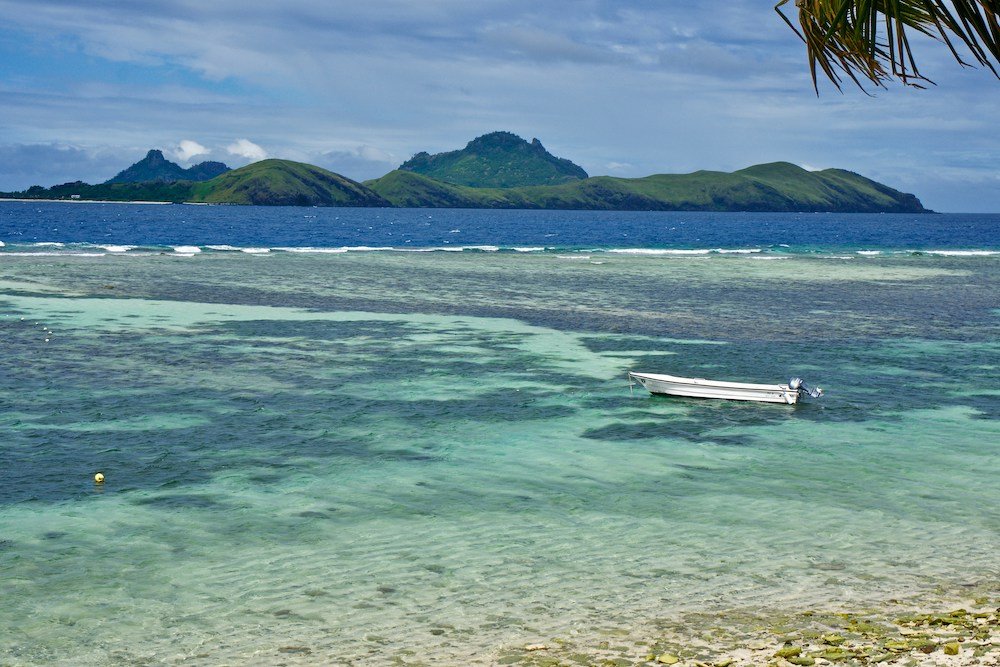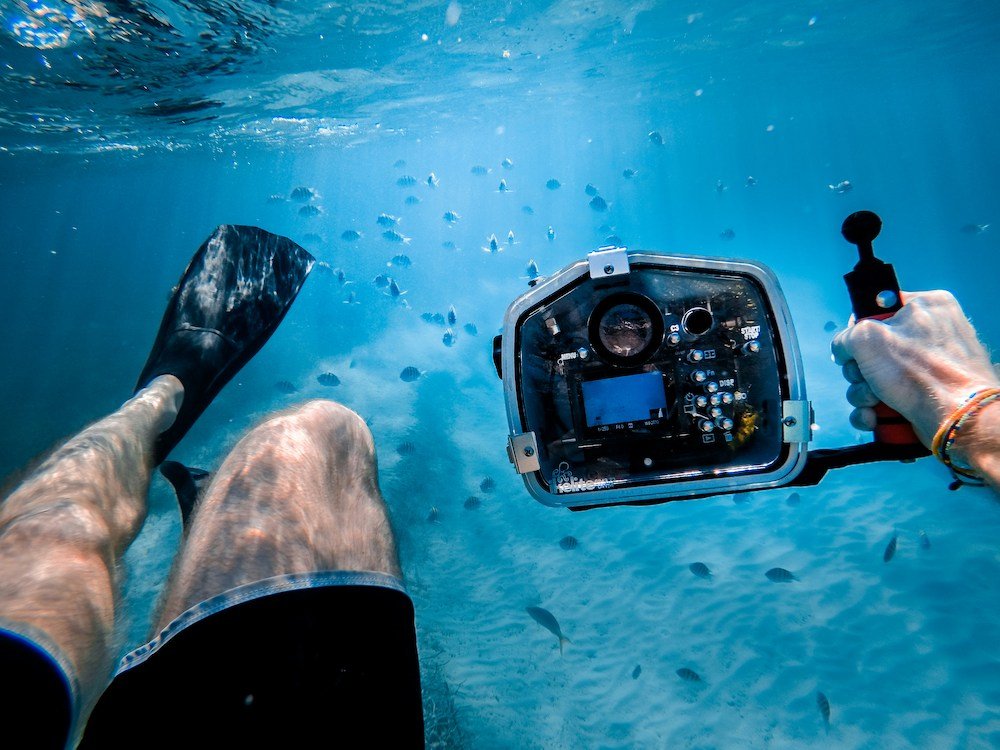
Want to find out what are the best islands for snorkeling?
Snorkeling, a gateway to the mesmerizing underwater world, beckons adventurers and nature enthusiasts alike.
Defined as the practice of swimming on or through a body of water while equipped with a diving mask, a shaped breathing tube called a snorkel, and usually fins, snorkeling offers an immersive experience into the vibrant marine ecosystems beneath the waves.
Snorkeling opens a window to a world brimming with life, color, and wonder.
It allows individuals to explore coral reefs, encounter diverse fish species, and witness the intricate dance of marine life. From tranquil lagoons to bustling underwater highways, snorkeling unveils nature’s beauty in its purest form.
Choosing the right destination for snorkeling is paramount.
The world’s oceans and seas boast a plethora of underwater landscapes, each with its own charm and allure.
Factors such as water clarity, marine biodiversity, and accessibility play crucial roles in determining the quality of the snorkeling experience.
Embark on a journey to discover the best islands for snorkeling across the globe.
From the azure waters of the Caribbean to the pristine coral reefs of the Pacific, these islands offer unparalleled opportunities to explore the underwater realm.
Join us as we delve into the top ten destinations where snorkeling enthusiasts can immerse themselves in nature’s splendor.
Criteria for Selection
When determining the best islands for snorkeling, several key factors come into play.
These criteria serve as guiding principles to ensure an unforgettable and enriching snorkeling experience.
- Marine Biodiversity: The richness and diversity of marine life are fundamental to an exceptional snorkeling experience. Islands boasting thriving coral reefs, colorful fish species, and other fascinating marine creatures rank high on the list of snorkeling destinations.
- Water Clarity and Visibility: Crystal-clear waters enhance visibility and allow snorkelers to appreciate the beauty of the underwater world with unparalleled clarity. Islands with pristine waters and excellent visibility offer optimal conditions for observing marine life and exploring vibrant coral gardens.
- Accessibility and Snorkeling Infrastructure: Accessibility to snorkeling sites, as well as the presence of well-developed snorkeling infrastructure, contribute to the overall convenience and enjoyment of the experience. Islands with easily accessible snorkeling spots, designated snorkeling areas, and amenities such as rental gear and guided tours facilitate seamless exploration beneath the waves.
- Safety and Environmental Conservation Efforts: Safety measures and environmental conservation efforts play a crucial role in preserving marine ecosystems and ensuring the well-being of both snorkelers and marine life. Islands with strict adherence to safety guidelines, responsible tourism practices, and initiatives aimed at protecting coral reefs and marine habitats offer sustainable snorkeling opportunities for future generations to enjoy.
By considering these factors, snorkeling enthusiasts can make informed decisions when selecting the best islands for their underwater adventures.
The World’s 10 Best Islands for Snorkeling
1: Palawan, Philippines

Nestled in the westernmost part of the Philippines, Palawan is renowned for its pristine beaches, turquoise waters, and rich biodiversity.
The province encompasses numerous islands and islets, each offering unique snorkeling opportunities amid breathtaking natural landscapes.
Snorkeling Highlights:
- Tubbataha Reefs Natural Park: Located in the Sulu Sea, Tubbataha Reefs Natural Park is a UNESCO World Heritage Site renowned for its exceptional marine biodiversity. Snorkelers can explore vibrant coral reefs teeming with colorful fish, sea turtles, and majestic marine creatures.
- El Nido: Dubbed as the “Last Frontier” of the Philippines, El Nido boasts awe-inspiring limestone cliffs, hidden lagoons, and pristine beaches. Snorkeling in El Nido’s clear waters unveils a kaleidoscope of marine life, including clownfish, parrotfish, and reef sharks.
- Coron: Home to numerous shipwrecks dating back to World War II, Coron is a haven for underwater exploration. Snorkelers can marvel at coral-encrusted wrecks, vibrant coral gardens, and an abundance of marine species, making it a must-visit destination for snorkeling enthusiasts.
Diverse Marine Life and Vibrant Coral Reefs:
Palawan’s underwater world is a haven for biodiversity, boasting a kaleidoscope of marine life and vibrant coral reefs.
Snorkelers can encounter an array of species, including vibrant reef fish, sea turtles, rays, and even elusive sea creatures like dugongs.
With its crystal-clear waters and pristine marine environments, Palawan offers an unforgettable snorkeling experience that showcases the wonders of the Philippine seas.
2. Maui, Hawaii

Maui, the second-largest island in Hawaii, is renowned for its stunning beaches, lush landscapes, and diverse marine ecosystems.
Located in the Central Pacific, Maui offers an idyllic setting for snorkeling adventures amidst tropical paradise.
Snorkeling Highlights:
- Molokini Crater: Situated off the coast of Maui, Molokini Crater is a submerged volcanic crater known for its pristine waters and thriving marine life. Snorkelers can explore the crater’s vibrant coral gardens and encounter an abundance of tropical fish, including butterflyfish, surgeonfish, and trumpetfish.
- Honolua Bay: Tucked away on Maui’s northwest coast, Honolua Bay is a marine reserve renowned for its crystal-clear waters and spectacular coral reefs. Snorkelers can immerse themselves in a kaleidoscope of colors as they encounter a diverse array of marine species, including green sea turtles, octopuses, and moray eels.
- Ahihi-Kinau Natural Area Reserve: Located along Maui’s southern coastline, the Ahihi-Kinau Natural Area Reserve offers pristine snorkeling opportunities amidst rugged lava formations and vibrant coral reefs. Snorkelers can swim alongside colorful fish species, explore underwater caves, and marvel at the island’s unique underwater landscapes.
Colorful Fish Species and Unique Underwater Landscapes:
Maui’s underwater world is teeming with life, featuring an array of colorful fish species and unique underwater landscapes.
From the intricate coral formations of Molokini Crater to the majestic sea cliffs of Honolua Bay, Maui offers unparalleled snorkeling experiences that showcase the beauty and diversity of Hawaii’s marine ecosystems.
3. Great Barrier Reef, Australia

Stretching over 2,300 kilometers along the northeastern coast of Australia, the Great Barrier Reef is the world’s largest coral reef system and a UNESCO World Heritage Site.
This natural wonder is composed of thousands of individual reefs and islands, creating a vibrant underwater ecosystem unparalleled in its beauty and diversity.
Snorkeling Highlights:
- Cairns: Serving as the gateway to the Great Barrier Reef, Cairns offers access to some of the most spectacular snorkeling sites in the region. Snorkelers can explore the outer reef systems, encounter colorful coral formations, and swim alongside an array of marine life, including reef fish, sea turtles, and reef sharks.
- Whitsunday Islands: Nestled in the heart of the Great Barrier Reef, the Whitsunday Islands boast secluded beaches, crystal-clear waters, and world-class snorkeling opportunities. Snorkelers can discover vibrant coral gardens, shallow lagoons, and underwater caves inhabited by an abundance of tropical fish species.
- Lady Elliot Island: Situated on the southern tip of the Great Barrier Reef, Lady Elliot Island is renowned for its pristine coral reefs and rich marine biodiversity. Snorkelers can explore the island’s vibrant underwater ecosystems, encounter manta rays, sea turtles, and explore the famous “Lighthouse Bommie” dive site, teeming with colorful reef fish and coral formations.
World’s Largest Coral Reef System and Rich Marine Biodiversity:
The Great Barrier Reef is not only a natural wonder but also a global hotspot for marine biodiversity.
Its diverse habitats support a vast array of marine species, including over 1,500 species of fish, 400 species of coral, and countless other marine organisms.
Snorkelers visiting the Great Barrier Reef are treated to an immersive experience in one of the most biologically diverse ecosystems on the planet.
4. Bonaire, Caribbean Netherlands

Bonaire, situated in the southern Caribbean, is part of the Caribbean Netherlands and is renowned for its breathtaking beaches, crystal-clear waters, and vibrant marine life.
As one of the premier snorkeling destinations in the world, Bonaire boasts an unspoiled underwater paradise waiting to be explored.
Snorkeling Highlights:
- Bonaire National Marine Park: Designated as a protected marine reserve, Bonaire National Marine Park encompasses the entire coastline of Bonaire and Klein Bonaire. Snorkelers can explore pristine coral reefs teeming with colorful fish species, sea turtles, and other marine creatures. With over 80 marked dive and snorkel sites, the marine park offers endless opportunities for underwater exploration.
- Klein Bonaire: Located just off the coast of Bonaire, Klein Bonaire is a small uninhabited island renowned for its secluded beaches and world-class snorkeling sites. Snorkelers can embark on a journey to discover vibrant coral gardens, underwater caves, and thriving marine ecosystems, all within a short boat ride from Bonaire’s main island.
Pristine Coral Reefs and Excellent Visibility:
Bonaire’s underwater landscapes are characterized by pristine coral reefs and exceptional visibility, making it an ideal destination for snorkeling enthusiasts of all levels.
Snorkelers can enjoy crystal-clear waters with visibility exceeding 100 feet, allowing for unparalleled views of the colorful coral formations and marine life that call Bonaire home.
With its commitment to conservation and sustainable tourism practices, Bonaire offers an immersive snorkeling experience that showcases the natural beauty and diversity of the Caribbean Sea.
5. Fiji

Fiji, an archipelago in the South Pacific Ocean, is renowned for its pristine beaches, turquoise waters, and warm hospitality.
Comprising over 300 islands, Fiji offers a diverse array of snorkeling opportunities amidst breathtaking natural beauty and vibrant marine ecosystems.
Snorkeling Highlights:
- Yasawa Islands: Located northwest of the main island of Viti Levu, the Yasawa Islands are a paradise for snorkeling enthusiasts. Snorkelers can explore secluded bays, vibrant coral reefs, and underwater caves inhabited by a kaleidoscope of marine life, including colorful reef fish, sea turtles, and rays.
- Taveuni: Known as the “Garden Island” of Fiji, Taveuni boasts some of the most spectacular snorkeling sites in the South Pacific. Snorkelers can discover colorful soft coral gardens, underwater pinnacles, and diverse marine ecosystems teeming with life.
- Beqa Lagoon: Situated off the southern coast of Viti Levu, Beqa Lagoon is renowned for its world-class diving and snorkeling experiences. Snorkelers can explore the lagoon’s vibrant coral reefs, encounter reef sharks, and witness breathtaking underwater landscapes that epitomize the beauty of Fiji’s marine environment.
Colorful Soft Coral Gardens and Diverse Marine Ecosystems:
Fiji is celebrated for its colorful soft coral gardens, which are among the most diverse and vibrant in the world.
Snorkelers can immerse themselves in a kaleidoscope of colors as they explore Fiji’s underwater landscapes, encountering an array of marine species, including clownfish, moray eels, and giant clams.
With its warm waters, pristine coral reefs, and rich biodiversity, Fiji offers an unforgettable snorkeling experience that showcases the splendor of the South Pacific.
6. The Maldives

The Maldives, an archipelago in the Indian Ocean, is renowned for its picture-perfect beaches, turquoise lagoons, and luxurious overwater villas.
Comprising 26 atolls and over 1,000 coral islands, the Maldives offers unparalleled snorkeling experiences amidst some of the world’s most pristine marine environments.
Snorkeling Highlights:
- Ari Atoll: Located in the central part of the Maldives, Ari Atoll is renowned for its diverse marine life and vibrant coral reefs. Snorkelers can explore shallow lagoons, encounter reef sharks, and swim alongside graceful manta rays in their natural habitat.
- Baa Atoll: Designated as a UNESCO Biosphere Reserve, Baa Atoll is celebrated for its exceptional biodiversity and thriving coral reefs. Snorkelers can discover colorful coral gardens, encounter sea turtles, and witness the mesmerizing beauty of the Maldives’ underwater landscapes.
- North Malé Atoll: Situated near the capital city of Malé, North Malé Atoll is a haven for snorkeling enthusiasts. Snorkelers can explore coral gardens teeming with tropical fish, encounter reef sharks, and marvel at the abundance of marine life that inhabits the atoll’s pristine waters.
Crystal-Clear Waters and Abundant Marine Life:
The Maldives is renowned for its crystal-clear waters, which offer unparalleled visibility for snorkelers to observe the vibrant marine life below.
Snorkelers can immerse themselves in a world of colorful coral reefs, encounter schools of tropical fish, and witness majestic marine creatures such as whale sharks and eagle rays.
With its warm tropical climate and pristine underwater environments, the Maldives provides an unforgettable snorkeling experience that epitomizes paradise.
7. Bora Bora, French Polynesia

1. Location and Description: Bora Bora, often referred to as the “Pearl of the Pacific,” is a breathtaking island located in French Polynesia’s Society Islands.
Known for its iconic turquoise lagoon, lush greenery, and towering Mount Otemanu, Bora Bora is a tropical paradise that attracts visitors from around the world seeking unparalleled beauty and luxury.
Snorkeling Highlights:
- Bora Bora Lagoon: The pristine lagoon surrounding Bora Bora is a haven for snorkeling enthusiasts. Snorkelers can explore vibrant coral gardens, encounter tropical fish species, and swim alongside graceful stingrays in the shallows of the lagoon.
- Anau: Situated on the eastern side of Bora Bora, Anau is home to some of the island’s most spectacular snorkeling sites. Snorkelers can venture into crystal-clear waters teeming with marine life, including colorful reef fish, sea turtles, and moray eels.
- Tupitipiti Point: Located on the southern tip of Bora Bora, Tupitipiti Point offers stunning coral formations and abundant marine biodiversity. Snorkelers can marvel at the intricate coral gardens, spot eagle rays gliding gracefully through the water, and perhaps even encounter gentle manta rays cruising along the ocean floor.
Vibrant Coral Gardens and Encounters with Manta Rays:
Bora Bora’s underwater world is renowned for its vibrant coral gardens and mesmerizing encounters with marine life.
Snorkelers can immerse themselves in a kaleidoscope of colors as they explore the island’s pristine reefs, encounter tropical fish darting among the corals, and witness the awe-inspiring beauty of manta rays gliding effortlessly through the azure waters.
With its enchanting underwater landscapes and abundant marine biodiversity, Bora Bora offers an unforgettable snorkeling experience that epitomizes paradise found.
8. Roatán, Honduras

Roatán, the largest of the Bay Islands in Honduras, is nestled in the western Caribbean Sea.
With its lush tropical landscapes, palm-fringed beaches, and vibrant coral reefs, Roatán is a paradise for snorkeling enthusiasts and nature lovers alike.
Snorkeling Highlights:
- West Bay Beach: Renowned for its powdery white sands and clear turquoise waters, West Bay Beach offers some of the best snorkeling opportunities on Roatán. Snorkelers can explore vibrant coral reefs just steps away from the shoreline, encountering an abundance of marine life, including colorful reef fish, sea turtles, and even the occasional dolphin.
- Sandy Bay Marine Park: Located on Roatán’s northwest coast, Sandy Bay Marine Park is a protected area teeming with marine biodiversity. Snorkelers can venture into the park’s pristine waters to discover coral gardens, seagrass beds, and underwater caves inhabited by a diverse array of marine species.
- Anthony’s Key: Situated off the coast of Roatán, Anthony’s Key is a secluded island renowned for its world-class diving and snorkeling sites. Snorkelers can explore vibrant coral reefs, encounter schools of tropical fish, and swim alongside majestic eagle rays and reef sharks in their natural habitat.
Varied Marine Life and Accessible Snorkeling Sites:
Roatán’s waters are home to a diverse array of marine life, making it an ideal destination for snorkeling enthusiasts of all levels.
From colorful reef fish and elusive seahorses to majestic sea turtles and vibrant coral formations, Roatán offers a treasure trove of underwater wonders waiting to be explored.
With its accessible snorkeling sites and warm Caribbean waters, Roatán provides an unforgettable snorkeling experience that showcases the beauty and diversity of Honduras’ marine ecosystems.
9. Koh Tao, Thailand

Koh Tao, meaning “Turtle Island” in Thai, is a picturesque island located in the Gulf of Thailand.
Known for its pristine beaches, lush jungles, and vibrant marine life, Koh Tao has earned a reputation as one of Southeast Asia’s premier snorkeling destinations.
Snorkeling Highlights:
- Shark Island: Situated off the southern coast of Koh Tao, Shark Island is named for the reef sharks that inhabit its waters. Snorkelers can explore colorful coral reefs, encounter schools of tropical fish, and, if lucky, catch a glimpse of the majestic blacktip reef sharks that frequent the area.
- Mango Bay: Tucked away on Koh Tao’s northwest coast, Mango Bay is a secluded cove renowned for its crystal-clear waters and diverse marine ecosystems. Snorkelers can swim among vibrant coral gardens, spot clownfish darting among sea anemones, and marvel at the underwater beauty of this hidden gem.
- Aow Leuk: Located on Koh Tao’s southeastern shore, Aow Leuk is a tranquil bay known for its shallow coral reefs and calm waters. Snorkelers can wade into the clear turquoise sea to discover a world of colorful fish, explore intricate rock formations, and witness the intricate dance of marine life in its natural habitat.
Underwater Rock Formations and Diverse Marine Species:
Koh Tao’s underwater landscape is characterized by dramatic rock formations, swim-throughs, and caverns that provide shelter to a diverse array of marine species.
Snorkelers can explore underwater pinnacles, swim alongside reef fish, and encounter fascinating creatures such as moray eels, sea turtles, and octopuses.
With its unique rock formations and abundant marine life, Koh Tao offers an unforgettable snorkeling experience that captures the essence of Thailand’s tropical paradise.
10. Galápagos Islands, Ecuador

The Galápagos Islands, located in the Pacific Ocean approximately 1,000 kilometers off the coast of Ecuador, are a UNESCO World Heritage Site and a living laboratory of evolution.
These volcanic islands are renowned for their unique biodiversity, pristine ecosystems, and iconic wildlife.
Snorkeling Highlights:
- Bartolomé Island: Situated in the eastern part of the Galápagos archipelago, Bartolomé Island is home to some of the most spectacular snorkeling sites in the region. Snorkelers can explore underwater lava formations, encounter colorful fish species, and swim alongside playful sea lions in the island’s crystal-clear waters.
- Floreana Island: Known for its rich history and pristine beaches, Floreana Island offers incredible snorkeling opportunities amidst its vibrant marine ecosystems. Snorkelers can explore coral reefs teeming with life, encounter green sea turtles, and witness the unique courtship rituals of the colorful reef fish that inhabit the island’s waters.
- Santa Cruz Island: The central hub of the Galápagos archipelago, Santa Cruz Island boasts a diverse array of snorkeling sites suitable for snorkelers of all skill levels. Snorkelers can discover underwater lava tunnels, swim alongside marine iguanas, and witness the graceful movements of eagle rays and reef sharks in their natural habitat.
Unique Marine Biodiversity and Encounters with Sea Lions and Marine Iguanas:
The Galápagos Islands are celebrated for their unique marine biodiversity, which includes endemic species found nowhere else on Earth.
Snorkelers can encounter playful sea lions, colorful marine iguanas, and other iconic creatures that have adapted to life in the remote archipelago.
With its pristine waters and unparalleled wildlife encounters, snorkeling in the Galápagos Islands offers an unforgettable journey into the heart of nature’s wonders.
Tips for Snorkeling on Islands
A. Essential Snorkeling Equipment
Before embarking on your snorkeling adventure, ensure you have the following essential equipment:
- Mask: Choose a mask that fits comfortably and provides a tight seal around your face to prevent water from entering.
- Snorkel: Select a snorkel with a comfortable mouthpiece and a purge valve for easy clearing of water.
- Fins: Invest in a pair of fins that fit snugly and provide efficient propulsion through the water.
- Rash Guard or Wetsuit: Consider wearing a rash guard or wetsuit to protect your skin from the sun and potential scrapes or stings.
B. Safety Guidelines and Precautions
Follow these safety guidelines to ensure a safe and enjoyable snorkeling experience:
- Buddy System: Always snorkel with a buddy and keep each other in sight at all times.
- Check Conditions: Assess weather and sea conditions before entering the water and avoid snorkeling in rough seas or strong currents.
- Know Your Limits: Snorkel within your comfort level and avoid pushing yourself beyond your abilities.
- Stay Hydrated: Drink plenty of water before and after snorkeling to stay hydrated, especially in hot climates.
- Respect Wildlife: Avoid touching or disturbing marine life, as some species may be sensitive or dangerous.
C. Environmental Conservation Practices
Help protect marine ecosystems by practicing environmental conservation:
- Reef-Safe Sunscreen: Use reef-safe sunscreen to minimize harmful chemicals that can harm coral reefs and marine life.
- Avoid Standing on Coral: Refrain from standing or touching coral reefs, as they are fragile and easily damaged.
- Dispose of Trash Properly: Pack out any trash or litter and dispose of it responsibly to prevent pollution in marine habitats.
- Support Sustainable Tourism: Choose snorkeling operators and tour companies that prioritize environmental conservation and responsible tourism practices.
D. Respect for Marine Life and Coral Reefs
Show respect for marine life and coral reefs by following these guidelines:
- Observe from a Distance: Maintain a respectful distance from marine animals and refrain from chasing or harassing them.
- Do Not Feed Wildlife: Avoid feeding fish or other marine creatures, as it can disrupt their natural behaviors and ecosystems.
- Do Not Collect Souvenirs: Refrain from taking shells, corals, or other marine souvenirs as they serve vital roles in marine ecosystems.
By following these tips and guidelines, you can enjoy a safe, responsible, and fulfilling snorkeling experience while minimizing your impact on the environment.
Conclusion:
As we conclude our exploration of the world’s best islands for snorkeling, let’s recap the top destinations that offer unparalleled opportunities to explore vibrant marine ecosystems:
- Palawan, Philippines
- Maui, Hawaii
- Great Barrier Reef, Australia
- Bonaire, Caribbean Netherlands
- Fiji
- The Maldives
- Bora Bora, French Polynesia
- Roatán, Honduras
- Koh Tao, Thailand
- Galápagos Islands, Ecuador
Snorkeling is more than just an activity; it’s a gateway to discovering the wonders of the underwater world.
From the crystal-clear waters of the Maldives to the vibrant coral reefs of Fiji, each island offers a unique snorkeling experience that promises adventure, beauty, and unforgettable encounters with marine life.

FAQ’s About Best Islands for Snorkeling:
What Island is Known for Snorkeling?
Among the top islands known for snorkeling, Bora Bora in French Polynesia stands out for its crystal-clear waters and vibrant marine life.
Renowned for its stunning coral reefs and encounters with sea turtles and sharks, Bora Bora offers an unparalleled snorkeling experience.
Where is the Best Snorkeling in the World?
The title of the best snorkeling destination is highly contested, but places like the Great Barrier Reef in Australia, Palawan in the Philippines, and the Maldives are often considered among the world’s best for snorkeling due to their diverse marine life and stunning underwater landscapes.
Which Pacific Island Has the Best Snorkeling?
The islands of Fiji, situated in the Pacific Ocean, are celebrated for their exceptional snorkeling opportunities.
With destinations like the Yasawa Islands and Taveuni, Fiji offers vibrant coral reefs, colorful fish species, and encounters with marine giants like manta rays.
Which Caribbean Island Has the Best Snorkeling?
Bonaire, part of the Caribbean Netherlands, is renowned for its pristine coral reefs and excellent visibility, making it one of the best Caribbean islands for snorkeling.
With sites like Bonaire National Marine Park and Klein Bonaire, snorkelers can explore diverse marine ecosystems teeming with life.
Where is the Best Coral Reef in the World?
The Great Barrier Reef in Australia is the largest coral reef system globally and is considered one of the most magnificent natural wonders on Earth.
Stretching over 2,300 kilometers, the Great Barrier Reef is renowned for its breathtaking coral formations, vibrant marine life, and unparalleled snorkeling opportunities.
Where is the Best Shore Snorkeling?
The island of Maui in Hawaii offers some of the best shore snorkeling experiences in the world. With sites like Molokini Crater, Honolua Bay, and Ahihi-Kinau Natural Area Reserve, snorkelers can explore vibrant coral reefs and encounter a diverse array of marine life right from the shore.





